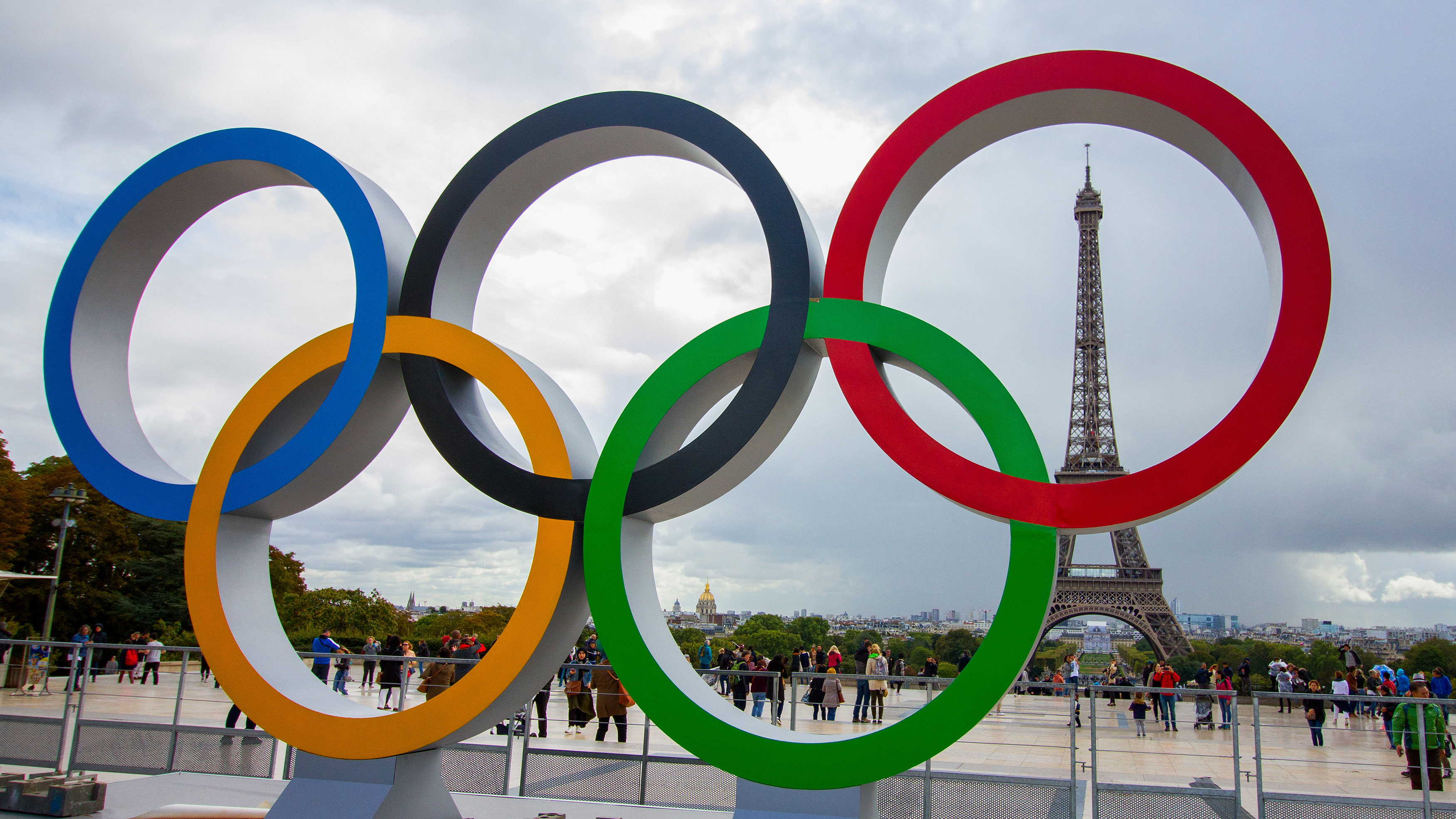Will China's diving dominance continue in Paris?
While Team USA entered the 2024 Olympics atop the all-time diving medal table, China has owned the event for the past several decades.
China captured 47 of the last 64 gold medals, including 27 of the last 32, since winning its first gold at the 1984 Los Angeles Games and going through the 2020 Tokyo Games. The dominant run includes near-sweeps at each of the past two Games, with China taking 7 of 8 golds in Rio and Tokyo.
We've got the news you need to know to start your day. Sign up for the First & 4Most morning newsletter — delivered to your inbox daily. Sign up here.
China is now on the brink of overtaking the U.S. for the most diving golds ever, sitting just one off the lead entering Paris.
Team USA, meanwhile, hasn't won gold since the 2012 London Games. But the Americans will send 10 divers, including three silver medalists from the Tokyo Olympics, to Paris looking to snap the country's gold medal drought.
From the athletes to how the scoring works and more, here's what to know about diving at the 2024 Olympics:
How long has diving been an Olympic sport?
Diving made its Olympic debut all the way back at the 1904 St. Louis Games, and it's been featured at every Olympics since. Women's diving events were first added to the Olympic program at the 1912 Stockholm Games.
What are the Olympic diving events?
There will be a total of eight diving events — four individual and four synchronized — at the Paris Olympics:
- Men's and women's 3m springboard
- Men's and women's 10m platform
- Men's and women's synchronized 3m springboard
- Men's and women's synchronized 10m platform
The synchronized events feature teams of two divers.
How high do Olympic divers jump from?
Olympic divers either leap from a flexible springboard that's 3 meters high, which is roughly 10 feet, or a rigid platform that's 10 meters high, which is around 33 feet.
What are the Olympic diving rules?
Men's events feature six dives per round while women's events have five. Individual competitions include a preliminary round followed by an 18-diver semifinal and a 12-diver final.
Synchronized events go straight from the preliminary round to an eight-team final.
What are the different types of dives?
There are five different groups of dives for springboard events and there's an additional sixth for platform competitions. The groups are based on a diver's starting position:
- Forward
- Backward
- Reverse
- Inward
- Twisting
- Armstand (only used in platform)
Men's platform divers must attempt each of the six dives per round, while men's springboard divers get to choose which dive they attempt twice.
Women's platform divers must attempt five of the six dives, while women's springboard divers must attempt each of the five possible dives.
What are the different body positions in diving?
There are four different body positions divers can take once they're in the air:
- A. Straight
- B. Pike
- C. Tuck
- D. Free
These positions are then combined with somersaults and/or twists.
How does scoring work in Olympic diving?
The scoring process for individual and synchronized events isn't the same.
Individual events feature a panel of seven judges who rate dives on a scale from 1-10 in half-point increments. Here's a look at the scoring scale:
- Excellent: 10
- Very Good: 8.5-9.5
- Good: 7-8
- Satisfactory: 5-6.5
- Deficient: 2.5-4.5
- Unsatisfactory: 0.5-2
- Completely failed: 0
When scoring an individual dive, judges consider the starting position/approach, takeoff, flight and entry into the water.
Once all seven scores are submitted, the two highest and two lowest ones are dropped. The three remaining scores are added together and then multiplied by the dive's degree of difficulty, resulting in the final score. The degree of difficulty assigned to a particular dive can range from 1.2 to 4.1 in one-tenth increments.
Synchronized events, meanwhile, feature a panel of 11 judges. But they all don't have the same role.
Three judges focus on scoring one diver and three judges are assigned to the other diver. The remaining five judges rate the team's synchronization. Judges scoring synchronization consider starting position/approach, takeoff, coordinated timing of movements during flight, similarity of angles of entry, comparative distance from the board at entry and coordinated time of entry.
Only five of the 11 scores are used: each diver's median score and the three middle synchronization scores. The five scores are added together, multiplied by 0.6 (to better align with individual scores) and finally multiplied by the degree of difficulty to arrive at the final score.
What do the codes mean in diving?
Dives are designated by an alphanumeric code used to assign degree of difficulty. The code always begins with a number from 1-6, referring to the dive group, and ends with a letter from A-D, referring to the body position.
Dives that don't include any twists will have three numbers before the letter. The second number will denote whether it's a flying dive (0 if it's not, 1 if it is) and the third digit refers to the number of half-somersaults. So, for example, a 106B would mean a forward dive (1) in a pike position (B) with three somersaults and no twists.
Dives that do incorporate twists will start with a 5 and feature four numbers before the letter. The second number for twisting dives is from 1-4 and refers to the starting position. The third digit refers to the number of half-somersaults and the fourth digit refers to the number of half-twists. As another example, a 5242B would mean a twisting (5) backward dive (2) in a pike position (B) with two somersaults (4) and one twist (2).
Why are scores crossed out in diving?
Crossed-out scores are ones that won't count toward a diver's final score. As previously mentioned, the two highest and two lowest scores in individual events are thrown out. In synchronized events, the highest and lowest scores for each individual diver are thrown out, along with the highest and lowest synchronization scores.
This process is utilized to prevent outlier scores from having a substantial impact on the results.
Why do divers shower after diving?
Divers back go and forth from being in a warm pool to a cool arena during competitions. So athletes will rinse off with warm water or go in a hot tub between dives to stay warm and keep their muscles loose.
Why do divers dry off after diving?
Athletes will also dry off between dives to prevent their arms and legs from becoming slippery and, in turn, throwing off their form.
What is the diving schedule at the 2024 Olympics?
The diving events will run from Saturday, July 27 to Saturday, Aug. 10.
Who are the US divers at the 2024 Olympics?
Team USA will have 10 athletes competing across seven different diving events in Paris. The American squad features three silver medalists from the pandemic-delayed 2020 Tokyo Games in Andrew Capobianco, Jessica Parratto and Delaney Schnell. Capobianco was part of the second-place men's synchronized 3m springboard team, while Parratto and Schnell combined to claim silver in the women's synchronized 10m platform.
Here's a full breakdown of the U.S. Olympic diving team by event:
Women's 3m springboard: Sarah Bacon, Alison Gibson
Men's 3m springboard: Andrew Capobianco, Carson Tyler
Women's synchronized 3m springboard: Sarah Bacon and Kassidy Cook
Men's synchronized 3m springboard: Tyler Downs and Greg Duncan
Women's 10m platform: Delaney Schnell, Daryn Wright
Men's 10m platform: Carson Tyler
Women's synchronized 10m platform: Jessica Parratto and Delaney Schnell
How many Olympic diving medals has Team USA won?
The United States sits atop the all-time Olympic diving medal table, owning the most golds (48) and total medals (138) entering Paris, according to Olympedia.
Which country has the most Olympic diving medals?
China is right behind the U.S. with 47 golds and also owns the second-most total medals at 81 entering Paris. No other country has won double-digit golds and Germany sits a distance third in total medals with 26.
The Associated Press contributed to this story





